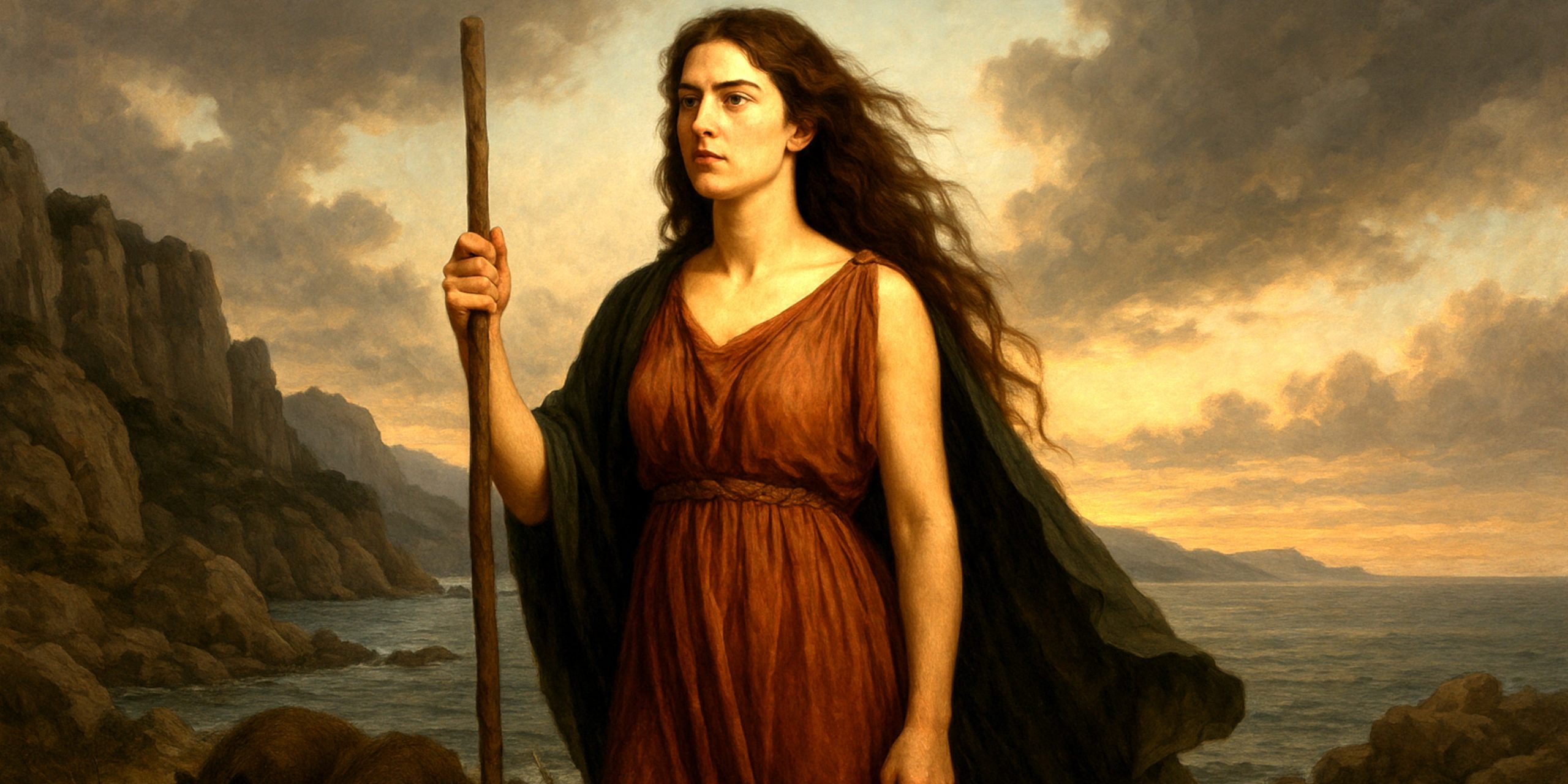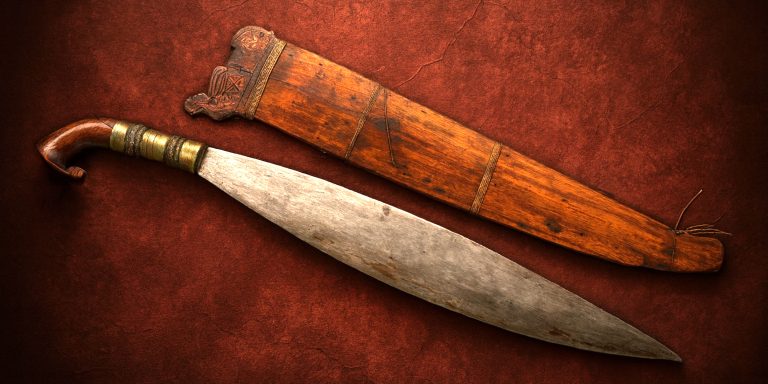
Few names in Greek mythology provoke such a delicious mixture of fascination and unease as Circe. She is the witch of Aiaia, the sorceress who turned men into pigs, and the woman who dared to defy both gods and heroes. Depending on who tells the story, she is either a dangerous temptress or an intelligent woman who refused to play by the rules. Personally, I find her rather refreshing. For a figure who appears only briefly in Homer’s Odyssey, her influence on the image of the witch has endured for nearly three millennia.
Origins and Family
Circe was born of divine stock. Most sources name her as the daughter of Helios, the sun god, and the Oceanid nymph Perse. Some later writers gave her siblings who were hardly less dramatic: Aeëtes, king of Colchis (famous for the Golden Fleece and father of Medea), and Pasiphaë, wife of King Minos and mother of the Minotaur. It is a family that could fill an entire series of cautionary tales.
She lived on the remote island of Aiaia, surrounded by lions and wolves who had once been men. Her isolation was self-imposed, perhaps punishment, perhaps preference. It is said she was banished there for practising witchcraft, which, to be fair, was a family tradition.
The Encounter with Odysseus
Circe’s most famous moment comes in Homer’s Odyssey. When Odysseus and his weary sailors reach her island, she invites them into her home. There is food, wine, and the kind of hospitality that usually bodes ill in myth. Once they have eaten, she flicks her wand and turns them into pigs. Not metaphorically. Actual pigs.
Only Odysseus, aided by the god Hermes, resists her magic with the help of the herb moly. In a scene that would make any modern therapist sigh, he confronts Circe, sword drawn, demanding she restore his men. She complies, and the two swiftly develop an understanding that lasts a year. Scholars like to debate whether this was love, manipulation, or just the most complicated holiday romance in literature. I rather think it was a bit of all three.
Nature of Her Power
Circe’s magic sets her apart. While gods command power by birthright, hers is learned, crafted, and applied. She uses herbs, potions, and spoken incantations. This marks her as one of the earliest depictions of the learned witch, the practitioner of knowledge as power rather than brute force.
Her art transforms the physical world, but it also exposes the frailty of men who underestimate her. When she turns Odysseus’s crew into pigs, it feels less like malice and more like metaphor. They behaved like beasts and were simply shown their true nature. It’s a rather neat moral lesson that men have been complaining about ever since.
Later Myths and Interpretations
Circe appears again in later traditions, occasionally as a mother, sometimes as a mentor. In some accounts, she bears Odysseus a son named Telegonus, who tragically kills his father by mistake. Others describe her helping Jason and Medea or teaching magical arts to future witches.
Her legend spread well beyond Greece. Roman poets like Ovid reimagined her as a tragic lover, capable of tenderness but forever betrayed. In later centuries she became the archetype of the femme fatale, a symbol of dangerous female power that men feared and secretly admired.
In modern literature, she has been reclaimed as something far more complex. Madeline Miller’s Circe (2018) paints her not as villain or seductress but as a woman carving her identity in a world ruled by gods and men. It’s one of those rare retellings that feels both ancient and vividly contemporary.
Quotes
Homer described her as “fair-tressed Circe, the dread goddess who speaks with a human voice.” Ovid called her “the mistress of charms and noxious herbs.” Both seem fascinated and unsettled by her in equal measure. Perhaps they sensed what she represented: female independence in a world uncomfortable with it.
Legacy
Circe’s story lingers because it captures something timeless. She represents the line between fear and fascination, knowledge and transgression. The idea of a woman alone, self-sufficient, and wielding power that terrifies men has never quite gone out of fashion.
Artists from the Renaissance to Pre-Raphaelites adored her. Painters like Waterhouse and Wright depicted her as sensuous and unreadable, surrounded by beasts and potions. Writers and filmmakers still draw from her archetype, often unconsciously. Every mysterious enchantress, from Tolkien’s Galadriel to the modern fantasy sorceress, carries a hint of Circe’s shadow.
Personal Reflections
When I first read the Odyssey as a student, I found Circe unsettling. She turned men into pigs, after all. But the older I get, the more I see her as a woman who understood her worth and didn’t apologise for it. She lived alone, made her own choices, and wielded her craft without seeking approval. In the ancient world, that made her a monster. To many of us today, it makes her a hero.
The Seven Swords Takeaway
Circe remains one of the most enduring figures in mythology because she refuses to fit into a neat moral category. She is neither wicked nor saintly, but vividly human in her contradictions. Her magic is an extension of her intellect, her isolation both punishment and liberation. Whether you see her as witch, goddess, or misunderstood woman, one thing is certain: she endures because she forces us to look at the uncomfortable power of knowledge and desire.
If the men she met happened to turn into pigs along the way, perhaps they had it coming.
Watch the documentary:



